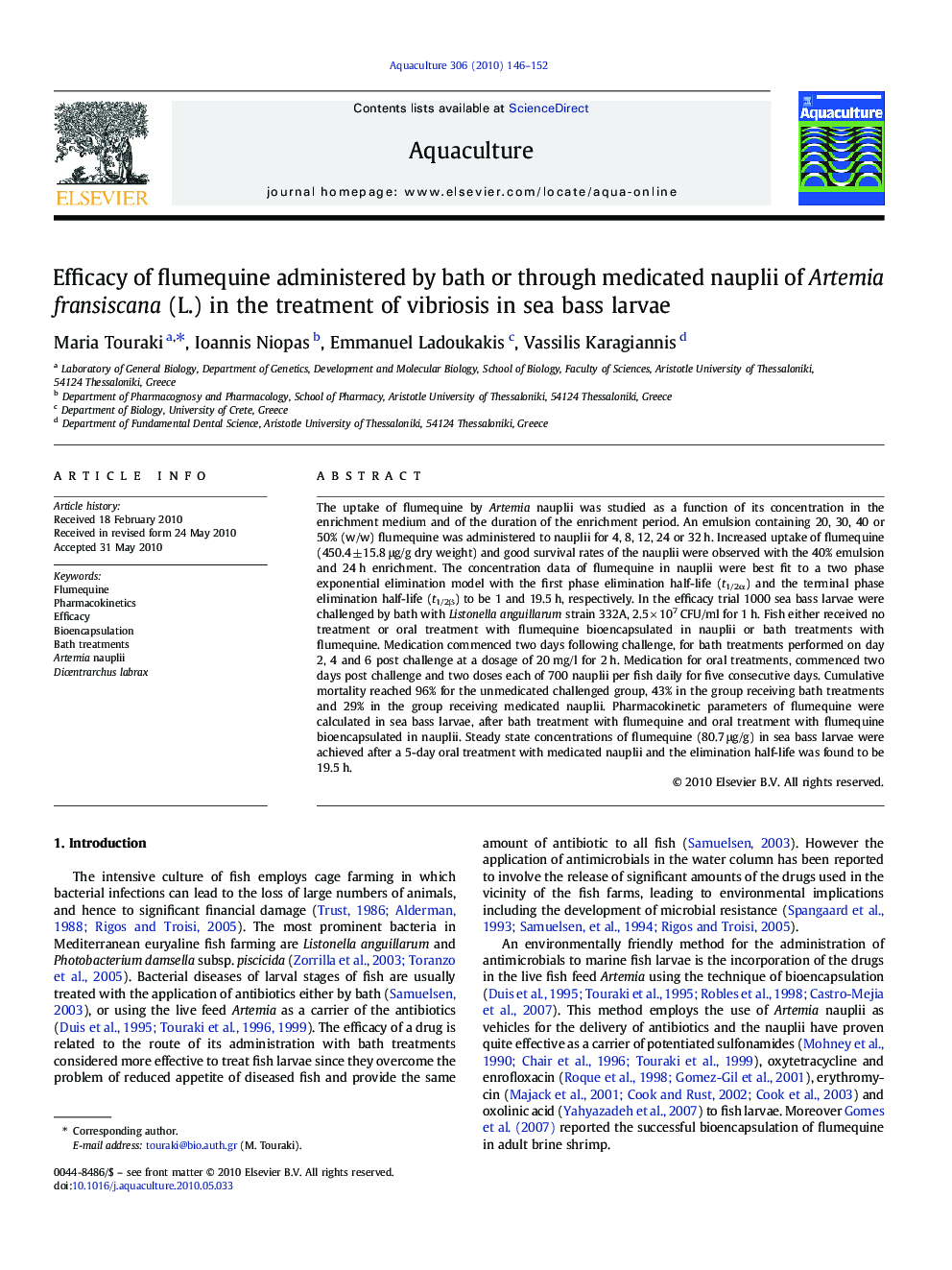| Article ID | Journal | Published Year | Pages | File Type |
|---|---|---|---|---|
| 2423593 | Aquaculture | 2010 | 7 Pages |
Abstract
The uptake of flumequine by Artemia nauplii was studied as a function of its concentration in the enrichment medium and of the duration of the enrichment period. An emulsion containing 20, 30, 40 or 50% (w/w) flumequine was administered to nauplii for 4, 8, 12, 24 or 32 h. Increased uptake of flumequine (450.4 ± 15.8 μg/g dry weight) and good survival rates of the nauplii were observed with the 40% emulsion and 24 h enrichment. The concentration data of flumequine in nauplii were best fit to a two phase exponential elimination model with the first phase elimination half-life (t1/2α) and the terminal phase elimination half-life (t1/2β) to be 1 and 19.5 h, respectively. In the efficacy trial 1000 sea bass larvae were challenged by bath with Listonella anguillarum strain 332A, 2.5 Ã 107 CFU/ml for 1 h. Fish either received no treatment or oral treatment with flumequine bioencapsulated in nauplii or bath treatments with flumequine. Medication commenced two days following challenge, for bath treatments performed on day 2, 4 and 6 post challenge at a dosage of 20 mg/l for 2 h. Medication for oral treatments, commenced two days post challenge and two doses each of 700 nauplii per fish daily for five consecutive days. Cumulative mortality reached 96% for the unmedicated challenged group, 43% in the group receiving bath treatments and 29% in the group receiving medicated nauplii. Pharmacokinetic parameters of flumequine were calculated in sea bass larvae, after bath treatment with flumequine and oral treatment with flumequine bioencapsulated in nauplii. Steady state concentrations of flumequine (80.7 μg/g) in sea bass larvae were achieved after a 5-day oral treatment with medicated nauplii and the elimination half-life was found to be 19.5 h.
Related Topics
Life Sciences
Agricultural and Biological Sciences
Aquatic Science
Authors
Maria Touraki, Ioannis Niopas, Emmanuel Ladoukakis, Vassilis Karagiannis,
